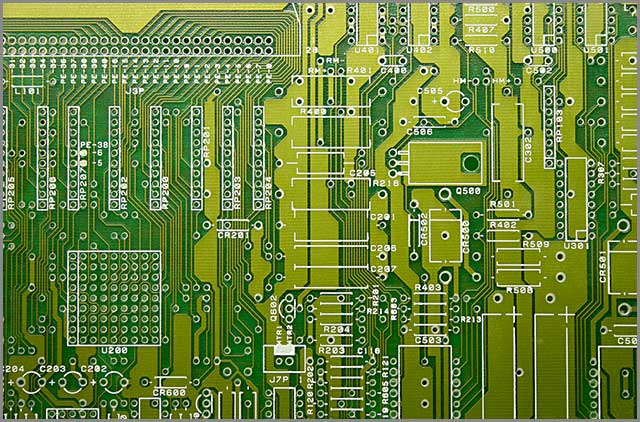On 10 Common PCB Quality Problems, PCB assembly is much correlated to PCB’s quality of PCB design and manufacturing as every PCB design engineer tends to place and route components according to his design tactics.
Similarly, all PCB manufacturers do not have an equal manufacturing facility, skilled workforce, and raw materials.
When putting PCB design rules into practice and manufacturing the boards. There are specific key design issues and aspects to consider before pursuing design finalization and fabrication.
Contents
- 1 1. Copper thickness:
- 2 2 . Discontinuous Vias:
- 3 3 . Solder mask voids:
- 4 4 . PCB Warpness:
- 5 5 . Common PCB Quality Problems—Surface finishing:
- 6 6 . Common PCB Quality Problems—Bad impedance:
- 7 7 . Common PCB Quality Problems—BGA solder void:
- 8 8 . Poor cutting and dimensioning:
- 9 9 . Common PCB Quality Problems—Blurred Silkscreen:
- 10 10 . Improper internal layer connections:
1. Copper thickness:
The copper thickness on a PCB is essential, especially for high-current applications. A thin track for high-current applications may behave like a fuse. Elevated current tracks need more copper thickness and vice versa.
The PCB manufacturers are to ensure the finished or base copper thickness per the design requirement.
It is checked after PCB finalization, either by the destructive or microscopic test of the copper tracks. It is mentioned in ounces per inch on the board surface, i.e., copper’s weight per square inch of the lamination sheet.
Standard copper thickness is 17, 35, and 70µm along with copper. The etched and finished copper width is also essential and mandatory to maintain.
2 . Discontinuous Vias:
The vias connect one layer to another. In PCB via manufacturing process. They are fabricated by using machine drilling or laser drilling. The holes are conductive by depositing a thin metallic conductive layer through electroplating.
They are called plated through-hole vias. Too fast hole fabrication or electroplating causes. It to broken and causes partial or complete discontinuity. It causes various problems in PCB Quality testing or product failure.
The through-hole vias, blind, buried, ad micro vias in multilayer PCBs are more prone to connecting. External layers are more prone to fault and tedious to troubleshoot.
This problem can be solved by adopting an advanced speed-compliant fabrication technique. Or incorporating vias with the large hole and annular ring sizes. (The figures Fig 1 and Fig 2 depict widespread problems via manufacturing.)
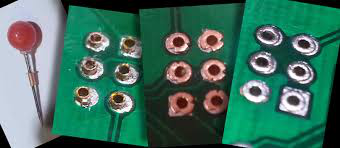
Fig 1:- Different vias and cracks on the annular rig surface of the via.
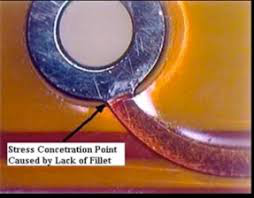
Fig 2:- Copper track to via connection breakage due to lack of fillet
In dense PCBs, when manufacturing via-in-pad. It is hard to get the via and pad annular ring pad flat without some sign of a dimple on the surface of the place.
This can give the assembly house problems during soldering and testing. Correcting leadless parts such as BGA and QFN packages is tough.
3 . Solder mask voids:
This is a common problem in PCB manufacturing. The solder mask layer required for copper exposure to an open environment saves copper and vias from corrosive effects.
It also mitigates solder bridging during PCB soldering and assembly. The solder mask voids arise when two footprint pads are designed very close.
Soldier masks cannot be deposited in the free area between two pads. The solder mask, in its existence, resists solder bridging.
This problem causes the PCB to be susceptible to short-circuiting and failure of PCB within the Lab. The solder voids are more dangerous for PCBs designed for BGA package components.
This problem can be avoided by taking care of the PCB-designated design rules definition design stage and sticking with PCB manufacturer recommendations.
Figures Fig 3 explains the solder mask voids in the PCBs.
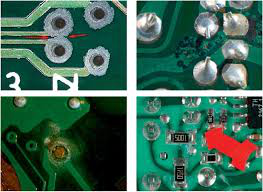
Fig 3:- (top-left) too much less solder mask clearance defined in PCB design rules
In-house PCB Quality control, but once the solder is used for soldering the component. Ensuring that the solder mask layer correctly joins the edge of each pad, not too much distance, and does not overlap.
It will ensure there is no exposed copper. Exposed copper in component pads will cause the bare boards to pass electrical testing (E-test) at the board manufacturer. It may bridge the exposed copper between places and cause a dead short.
4 . PCB Warpness:
Also referred to as PCB twist and mainly arises in multilayer boards. It occurs due to a lack of temperature control and heats unbalanced increase rates during the board manufacturing. A good manufacturer will control heat increase rates.
Also, the boards need rigid support to ensure flatness during manufacturing. PCB warp once occurred during manufacturing is almost impossible to remove. PCB warp also causes complete copper-tracks breakage or cracks.
The flatness is a visual PCB Quality aspect of the boards and is generally conducted after finalizing the manufacturing process.
Or before the PCB Quality control stage before assembly. The board’s flatness is essential for solder paste deposition and component mounting during the components mounting and assembly process.
However, it is also necessary to handle and position the panels accurately during manufacturing.
To prevent PCB warp, PCB manufacturers adopt different techniques.
For example, a PCB manufacturer bakes the PCB panels in an oven with the temperature set to 260°F (degree Fahrenheit) to keep the boards flattened.
As the press under high temperature heats up, the laminate cores become more pliable, causing the etched conductors to revert to their actual size and initial position. It seems to remove some of the former lamination warp.
The standard practices exercised to mitigate PCB warp in the industry during fabrication are selecting the base material suitable for lead-free soldering, low elasticity, and high rigidity, and sustaining rigidity during the whole board fabrication process.
Use proper temperature, pressure, ad pressing materials to reduce stress till boarding finalization. Avoid mixing materials of different types and from other manufacturers.
Use appropriate heat ovens for temperature provisions and cooling chambers for proper processing.
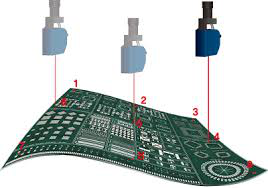
Fig 4:- A 3D model of PCB warp (bow and twist) of a manufactured PCB
5 . Common PCB Quality Problems—Surface finishing:
PCBs’ surface finishing or surface smoothness like pads, vias, via-in-pads, and copper tracks is also essential.
Most PCB manufacturers commit to and guarantee good PCB Quality. ENIG (Electroless Nickel Immersion Gold) surface finishing and used chiefly.
ENIG contaminations impose extreme difficulties in soldering because the surface particles and impurities are a barrier to building a joint between the footprint pad and component pad.
The subsequent lab testing reveals the decreased pull strength. Even if the component looks adequately soldered. However, the problem of the improper joint building still exists.
6 . Common PCB Quality Problems—Bad impedance:
The impedance is faced by signals traveling from the source to the destination in a PCB. It is essential for high-speed digital (such as the motherboard) and RF (mobile phones) PCBs.
The common problem found by the assembly houses is that the impedance differs considerably between different PCB lots causing impedance mismatch of product response difference.
This problem can be encountered on the PCB manufacturer’s end by using proper PCB base and pre-preg materials and improving etching techniques to improve tracking.
7 . Common PCB Quality Problems—BGA solder void:
During PCB assembly, the BGA pads solder voids may lead to the chip’s dry joint and hence the board assembly’s poor performance.
It is possible that it may not be detected in the boundary test or lab performance test. So BGA package soldering companies must have affixed the X-RAY inspection setup.
Figure 5 shows the BGA package component with solder void and its detestation using an X-Ray inspection setup.
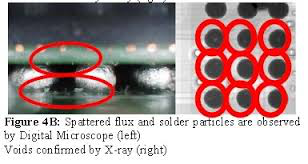
Fig 5:- BGA package solder void and inspection
8 . Poor cutting and dimensioning:
The size of a PCB in an assembly is critical for many reasons. The PCBs should be ensured and guaranteed to be compliant with dimensional dimensions and tolerances sought by the designer.
It is much crucial to fix them inside the mechanical box or assemblies. The board cut too large or too small may not fit into the mechanical box assembly.
It becomes even more severe when it is required for compact multi-part groups like industrial applications.
The mechanical dimensions of a PCB quality are checked visually before proceeding to the group.
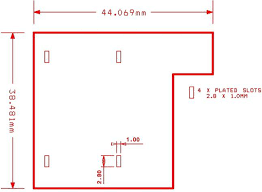
Fig 6:- Finished PCB dimensional cutting
9 . Common PCB Quality Problems—Blurred Silkscreen:
PCB nomenclature marks, layer count, and other assembly marking are generally placed in the silkscreen layer of the PCB.
A weak or low-resolution printing machine may cause flawed blurred characters to be printed on the PCB. It causes misinterpreted designator numbers.
For instance, it is hard to differentiate between 1 and 7 and between B and eight characters placed on poorly printed silkscreen PCB.
10 . Improper internal layer connections:
It is a widespread problem in the PCB manufacturing and utilization industry that internal layers of the PCBs, such as signal layers, ground planes, and power supply planes, are short-circuited.
This is quite undoable, and very hard to locate the problem. The PCB quality problem can be identified by using effective E-test methods.



